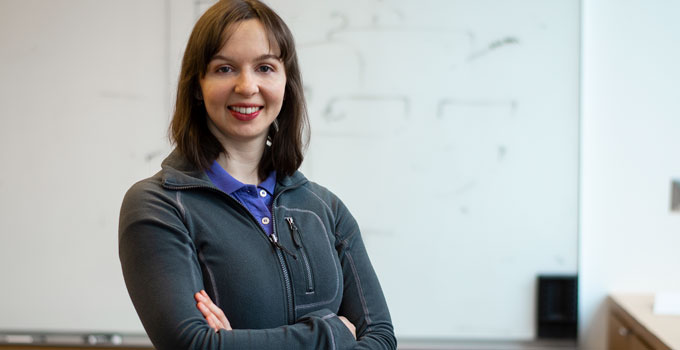
Toronto-based machine learning experts map the changes that lead to cancer, revealing opportunities for earlier diagnosis and new approaches to outmaneuver the disease
A tumour is often made up of different cells, some of which have changed – or evolved – over time and gained the ability to grow faster, survive longer and potentially avoid treatment. These cells, which have an ‘evolutionary advantage’, are thought to cause the vast majority of cancer deaths but researchers now have a new tool to tackle tumour evolution: TrackSig.
TrackSig – which was developed by Dr. Quaid Morris and his team at the University of Toronto, the Vector Institute and OICR – is a novel computational method that can map a cancer’s evolutionary history from a single patient sample and in turn help researchers thwart the disease’s next move.
“We combined sequencing with evolutionary theory and mathematical modeling to understand how cancers develop and adapt to resist treatment,” says Yulia Rubanova, PhD Candidate in the Morris Lab and lead author of the study. “This understanding lays the foundation for us to be able to predict – and impede – tumour evolution in future cancer patients.”
This understanding lays the foundation for us to be able to predict – and impede – tumour evolution in future cancer patients
– Yulia Rubanova
TrackSig was published today in Nature Communications alongside nearly two dozen other publications in Nature and its affiliated journals related to the Pan-Cancer Analysis of Whole Genomes Project, also known as the Pan-Cancer Project or PCAWG.
Previous tumour evolution studies focused on identifying the most frequent changes – or mutations – in a patient sample, where the most common mutations represent changes that came earlier in the tumour’s development and less common mutations represent more recent changes. Instead, Morris’ TrackSig charts different types of mutations over time, generating maps of a tumour’s evolutionary history in finer detail and with better accuracy than ever before.
This level of resolution enabled the discovery that many cancer-causing genetic changes occur long before the disease is diagnosed.
“For exceptional cases like in certain ovarian cancers, we were able to see these early events happening 10 to 20 years before the patient has any symptoms,” says Dr. Lincoln Stein, Head of Adaptive Oncology at OICR and member of the Pan-Cancer Project Steering Committee. “This opens up a much larger window of opportunity for earlier detection and treatment than we thought possible.”
The tools and findings from the Pan-Cancer Project are changing the way we think about cancer
– Dr. Quaid Morris
With their new detailed maps of tumour evolution, the research group plans to further investigate novel cancer treatment strategies and design new therapies that can better anticipate, prevent and overcome evolution and drug resistance.
“The tools and findings from the Pan-Cancer Project are changing the way we think about cancer,” says Morris. “We’ve uncovered new opportunities to improve diagnosis and treatment, and we’ll continue to strive towards getting the best treatment to patients at the right time.”
TrackSig is freely available for the research community to use at https://github.com/morrislab/TrackSig.
Related links
- Unprecedented exploration generates most comprehensive map of cancer genomes charted to date
- New clues to cancer in the genome’s other 99 per cent
- AI algorithm classifies cancer types better than experts
- Whole-genome analysis generates new insights into viruses involved in cancer
- Dr. Lincoln Stein talks about the Pan-Cancer Project
- Finding the roots of cancer, ‘It’s a needle in a haystack’
- Unraveling the story behind the cancers we can’t explain
- Discovering cancer’s vulnerabilities: The whole may be greater than the sum of its parts
- New tumour-driving mutations discovered in the under-explored regions of the cancer genome
